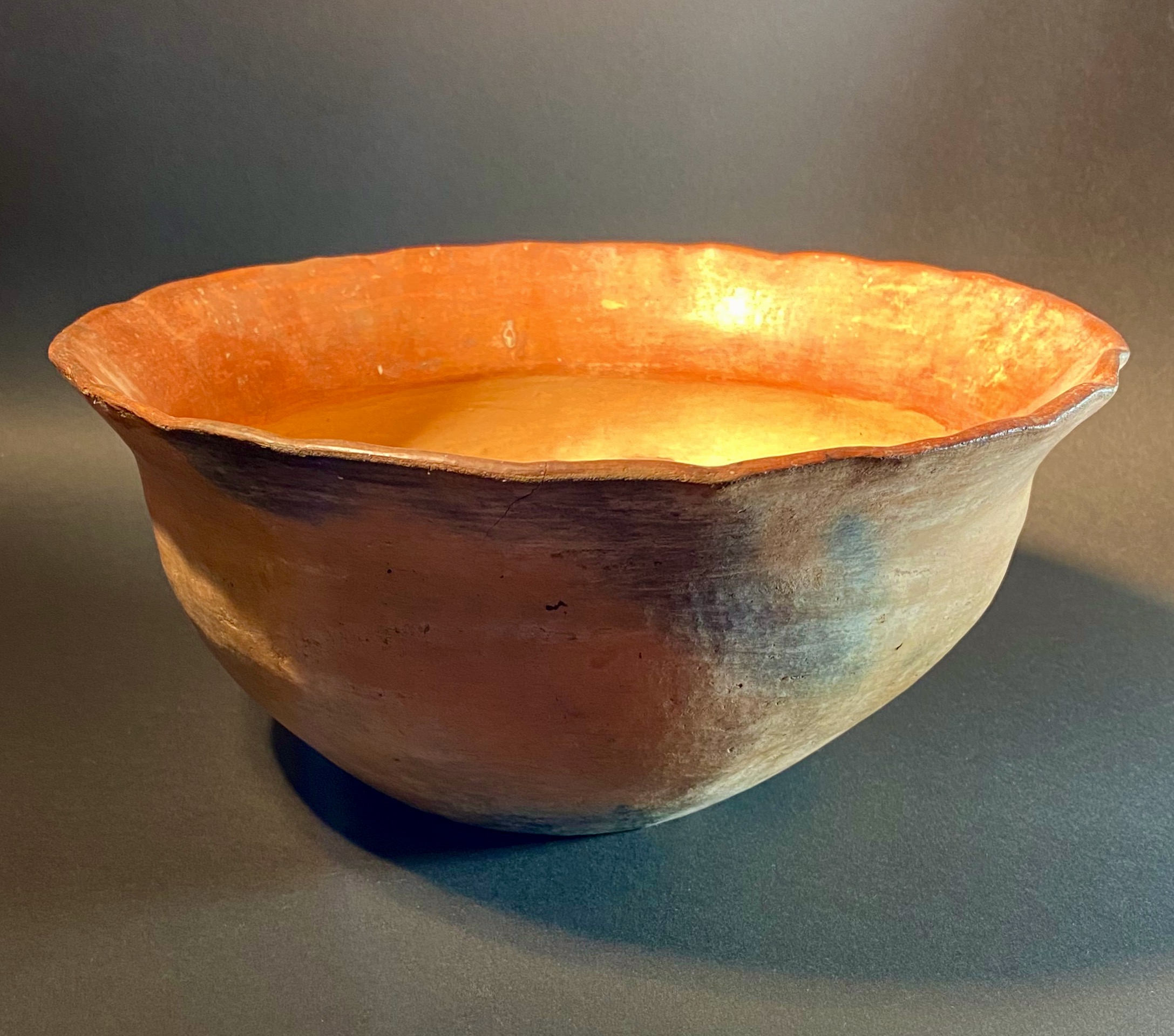

Title: Ancient Terra-cotta Hand Made Ceramic American Indian Pottery
Shipping: $29.00
Artist: N/A
Period: Antiquity
History: Ancient Art
Origin: North America > United States
Condition: N/A
Item Date: N/A
Item ID: 545
This is a remarkable American Indian artifact—an expansive, ancient, handcrafted terracotta ceramic bowl, part of American Indian pottery. Discovering such an ancient American ceramic piece in such pristine condition is quite challenging. It is both very rare and fragile. The history of American Indian terra-cotta ancient ceramics is a captivating journey that unveils the rich artistry behind these exceptional bowls. These artifacts, handcrafted with meticulous care, served multifaceted purposes within indigenous communities. In their utilitarian function, these bowls were indispensable vessels for storing and preparing food. The art of crafting these ceramics was not only practical but also an expression of cultural identity. The intricate designs, patterns, and motifs adorning the bowls reflected the unique artistic styles of different tribes, telling stories of traditions, beliefs, and daily life. Beyond their utilitarian role, these ceramics held ceremonial significance. Some bowls were crafted specifically for rituals, ceremonies, or spiritual gatherings, serving as conduits between the material and spiritual realms. The process of creating these vessels was often ritualistic itself, with artisans infusing their work with spiritual intent. The artistry of these ancient bowls extended beyond mere functionality, transforming them into revered cultural artifacts. The meticulous craftsmanship, coupled with the symbolic elements embedded in their designs, turned these ceramics into expressions of creativity and cultural heritage. In essence, American Indian terra-cotta ancient ceramics were not just utilitarian items; they were masterpieces that spoke volumes about the artistic prowess, cultural depth, and spiritual significance of the indigenous peoples who created them. Each bowl encapsulates a piece of history, preserving the stories and traditions of the vibrant and diverse American Indian cultures.
The streets lined with terra-cotta pottery and bowls in indigenous American communities were likely part of marketplaces or trading areas where these artifacts held both utilitarian and symbolic roles. Utilitarian Use: Storage and Cooking: Terra-cotta pottery and bowls were practical vessels for storing food and liquids. The porous nature of the clay helped in regulating moisture and temperature, making them suitable for storing grains, beans, and liquids. They were also used for cooking stews, soups, and other traditional dishes. Ceremonial and Symbolic Use: Rituals and Ceremonies: Some pottery and bowls had ceremonial significance, being crafted specifically for rituals, ceremonies, and spiritual practices. They might have been used in various ceremonies such as feasts, religious rites, or even as offerings to deities. Symbolism: The designs and motifs on the pottery often carried symbolic meanings related to the cultural and spiritual beliefs of the specific tribe. These symbols could represent aspects of nature, deities, or stories from the tribe's mythology. Trade and Exchange: Commerce: The streets with terra-cotta pottery could have been part of trading hubs where these items were exchanged for other goods. Different tribes had unique styles and artistic traditions, and the pottery might have been a valuable commodity in intertribal trade. Artistic Expression: Cultural Artifacts: The pottery and bowls were not just functional items but also works of art. They showcased the artistic talents of the community and served as a means of preserving and passing down cultural heritage. Everyday Life: Domestic Use: In everyday life, families used pottery for various domestic activities. From serving meals to storing water, pottery played an integral role in the daily routines of American Indian households. In essence, the streets adorned with terra-cotta pottery and bowls were likely vibrant hubs where both the practical and cultural aspects of these artifacts intersected. They were essential not only for the daily activities of indigenous peoples but also for the expression of their identity and spirituality.